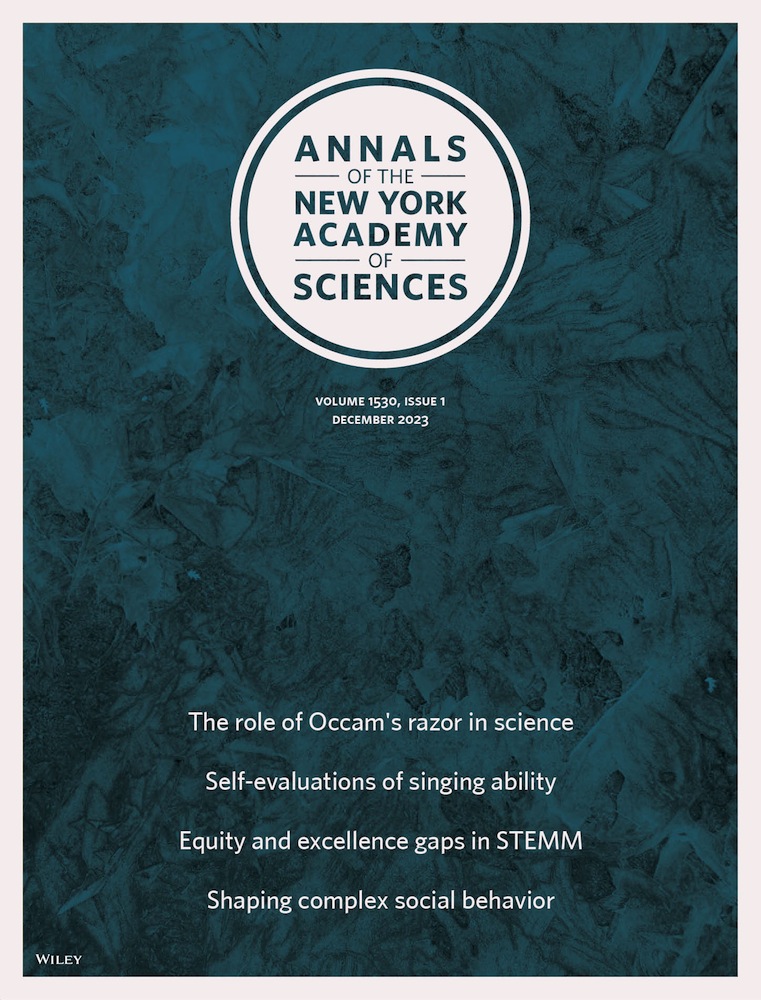野生猩猩的三阶自嵌入声基序,以及递归的选择性进化。
IF 4.1
3区 综合性期刊
Q1 MULTIDISCIPLINARY SCIENCES
引用次数: 0
摘要
递归是一种将信号或模式嵌套在自身内部的神经计算操作,它是语言的结构基础。自20世纪50年代乔姆斯基(Chomsky)对句法的开创性研究以来,认知科学中最激烈的争论之一是,递归是逐步进化还是突然进化的,这在非人类动物的声乐曲目中一直被认为是不存在的。最近在野生(非人类)大猿(婆罗洲雄性猩猩的长叫声)中发现了自我嵌入的声音图案,这为递归,或者至少是时间递归,在原始人中不是人类独有的概念提供了初步但重要的支持,它的进化是基于共同的祖先。在这些发现的基础上,我们对野生苏门答腊雌性猩猩的报警叫声进行了四个必要的预测,这是类人猿(人类除外)中已知最长的辅音和元音报警叫声组合。从数据中,我们提出了三阶自嵌入等时性:嵌套等时组合单元的三个层次,每个层次相对于上下文表现出独特的变化动态和信息内容。我们的研究结果证实,递归操作是类人猿叫声组合学的基础,随着声音序列变得更长更复杂,这种操作可能在人类谱系中逐渐进化。本文章由计算机程序翻译,如有差异,请以英文原文为准。
Third-order self-embedded vocal motifs in wild orangutans, and the selective evolution of recursion.
Recursion, the neuro-computational operation of nesting a signal or pattern within itself, lies at the structural basis of language. Classically considered absent in the vocal repertoires of nonhuman animals, whether recursion evolved step-by-step or saltationally in humans is among the most fervent debates in cognitive science since Chomsky's seminal work on syntax in the 1950s. The recent discovery of self-embedded vocal motifs in wild (nonhuman) great apes-Bornean male orangutans' long calls-lends initial but important support to the notion that recursion, or at least temporal recursion, is not uniquely human among hominids and that its evolution was based on shared ancestry. Building on these findings, we test four necessary predictions for a gradual evolutionary scenario in wild Sumatran female orangutans' alarm calls, the longest known combinations of consonant-like and vowel-like calls among great apes (excepting humans). From the data, we propose third-order self-embedded isochrony: three hierarchical levels of nested isochronous combinatoric units, with each level exhibiting unique variation dynamics and information content relative to context. Our findings confirm that recursive operations underpin great ape call combinatorics, operations that likely evolved gradually in the human lineage as vocal sequences became longer and more intricate.
求助全文
通过发布文献求助,成功后即可免费获取论文全文。
去求助
来源期刊

Annals of the New York Academy of Sciences
综合性期刊-综合性期刊
CiteScore
11.00
自引率
1.90%
发文量
193
审稿时长
2-4 weeks
期刊介绍:
Published on behalf of the New York Academy of Sciences, Annals of the New York Academy of Sciences provides multidisciplinary perspectives on research of current scientific interest with far-reaching implications for the wider scientific community and society at large. Each special issue assembles the best thinking of key contributors to a field of investigation at a time when emerging developments offer the promise of new insight. Individually themed, Annals special issues stimulate new ways to think about science by providing a neutral forum for discourse—within and across many institutions and fields.
 求助内容:
求助内容: 应助结果提醒方式:
应助结果提醒方式:


